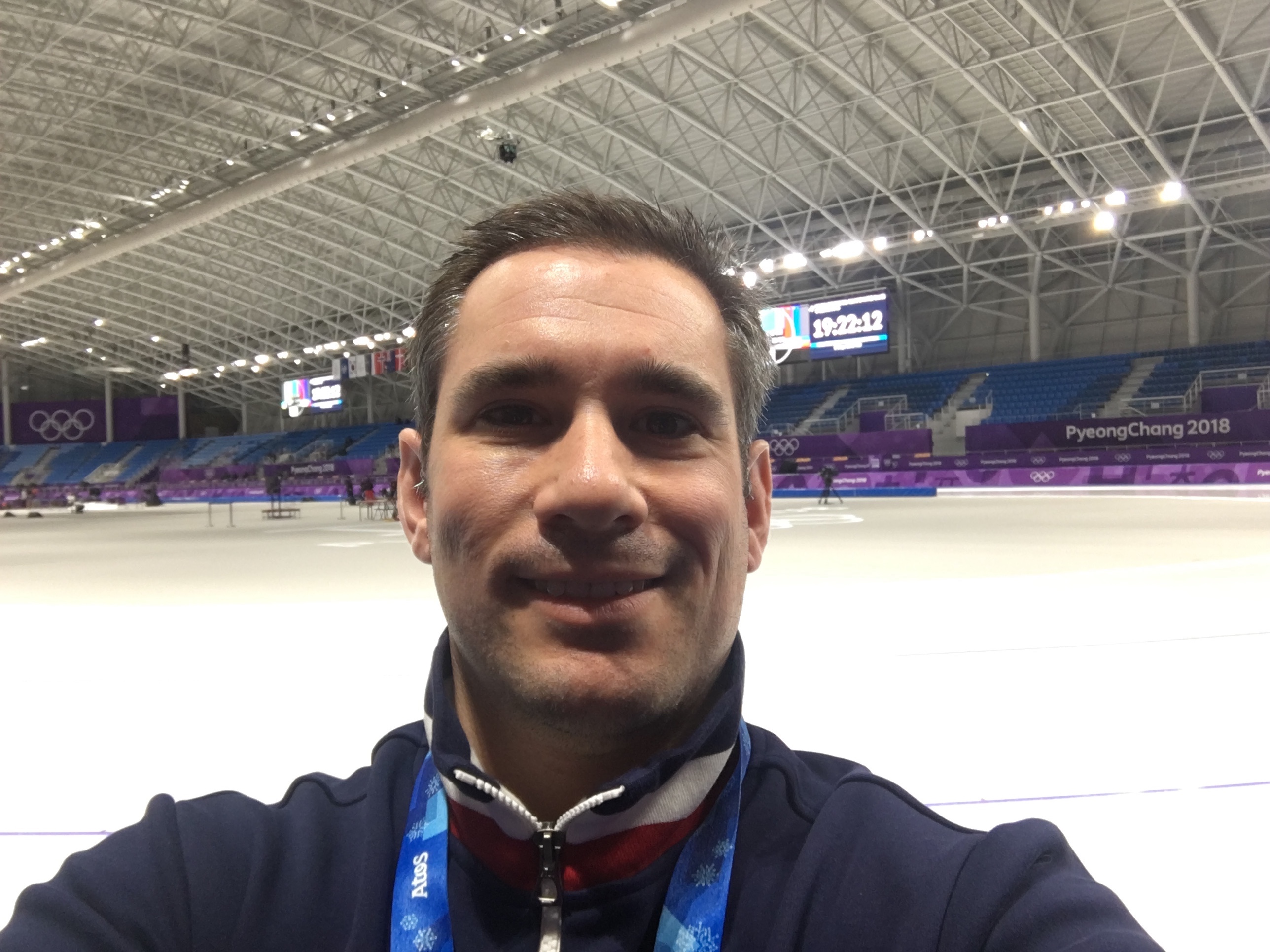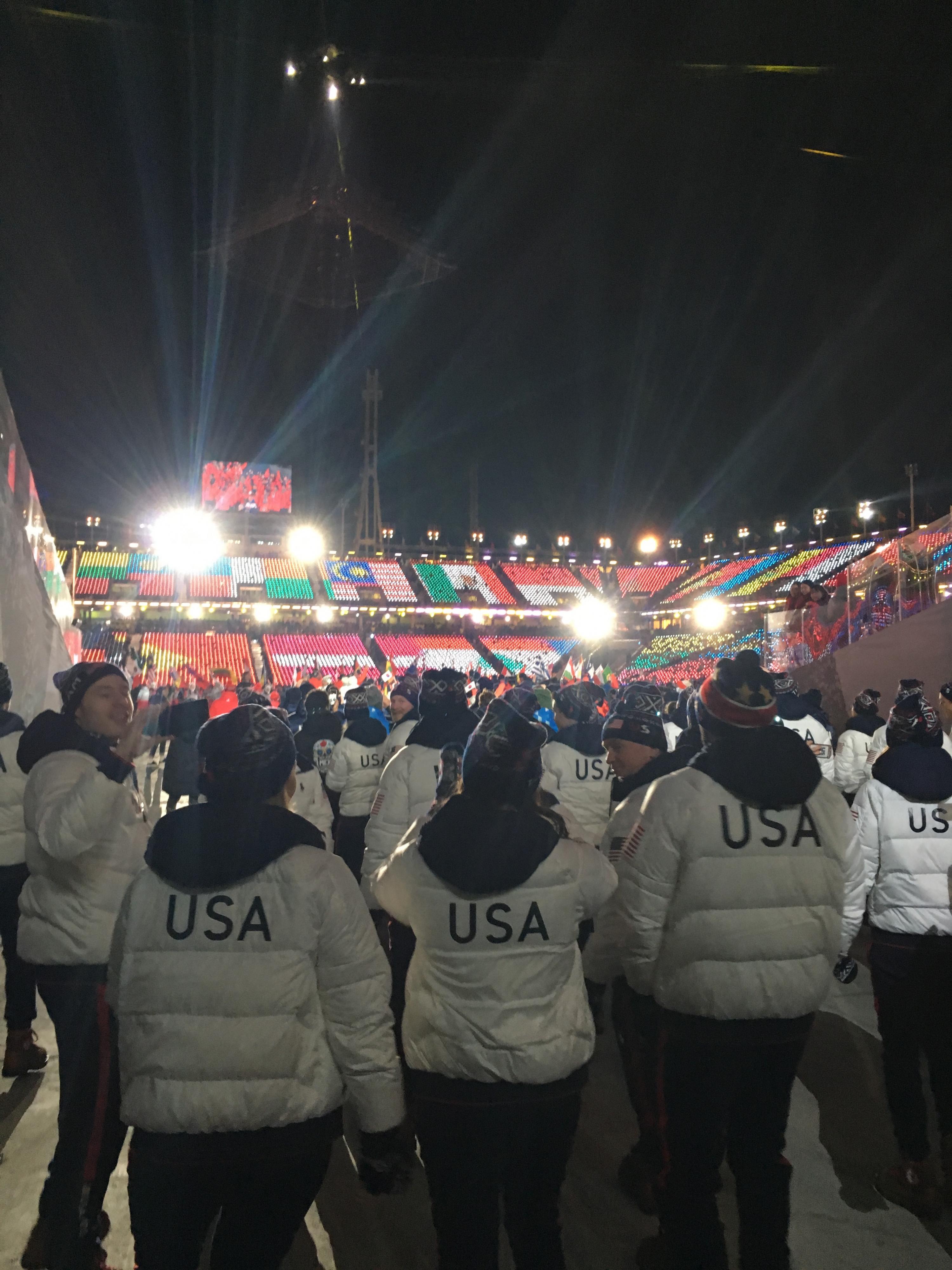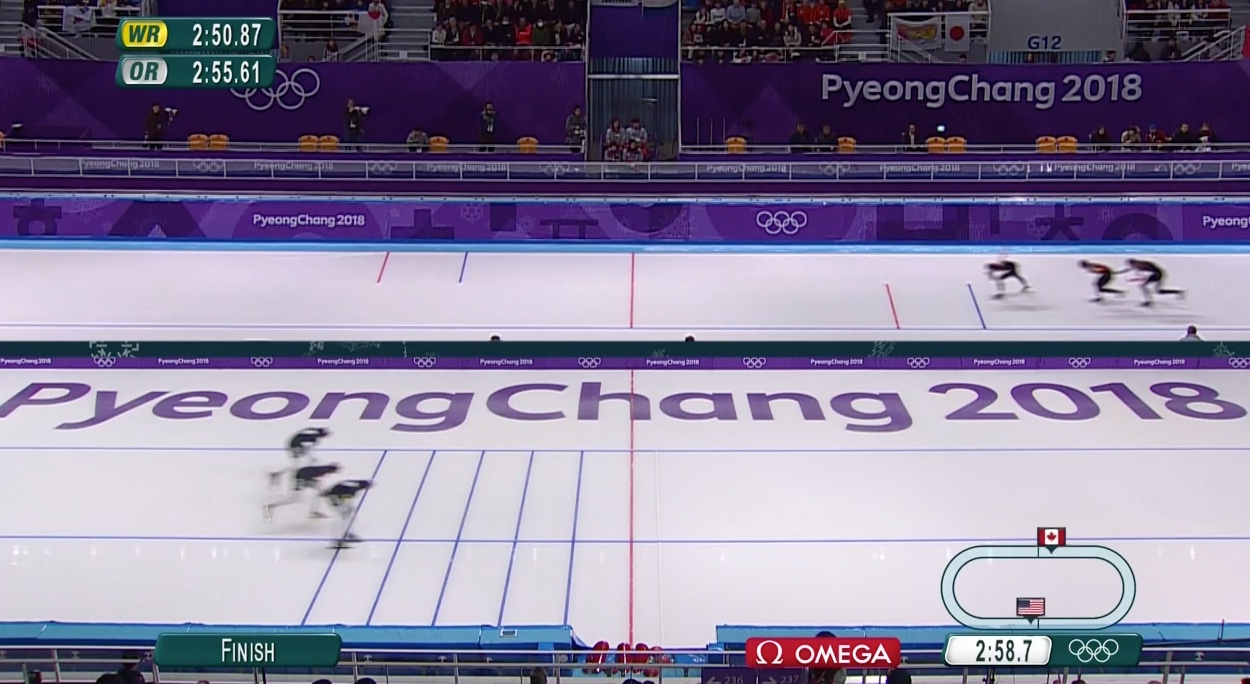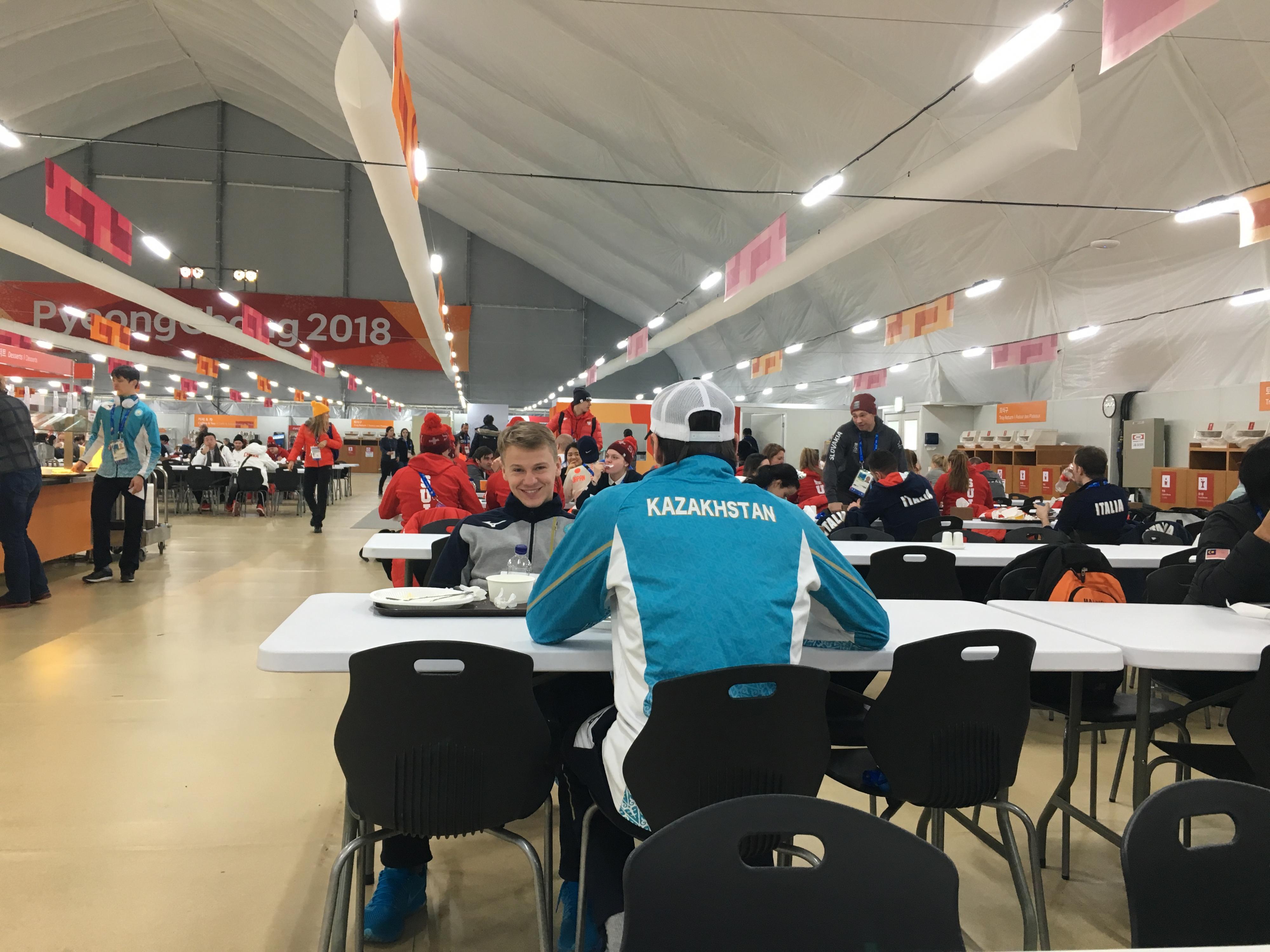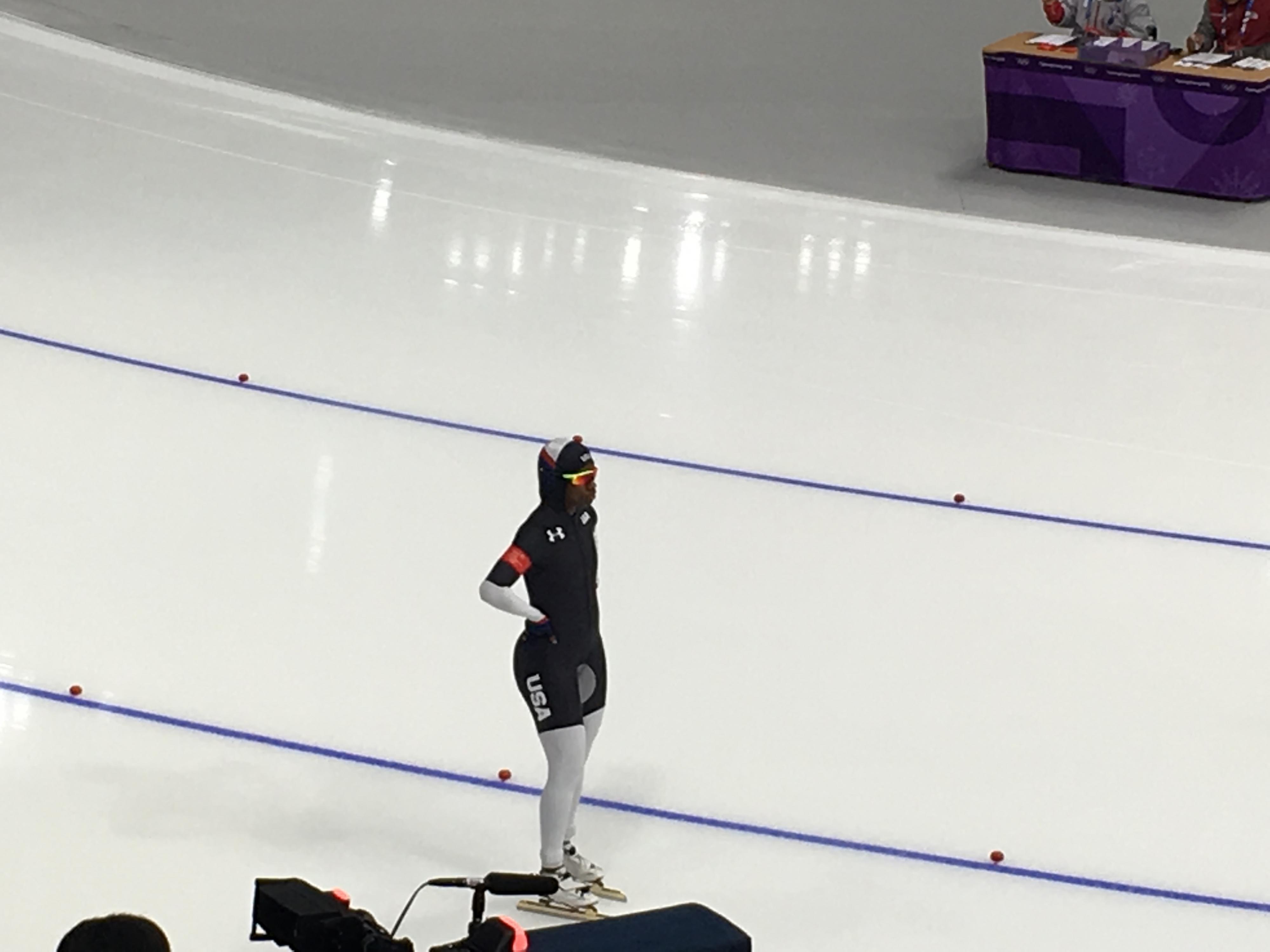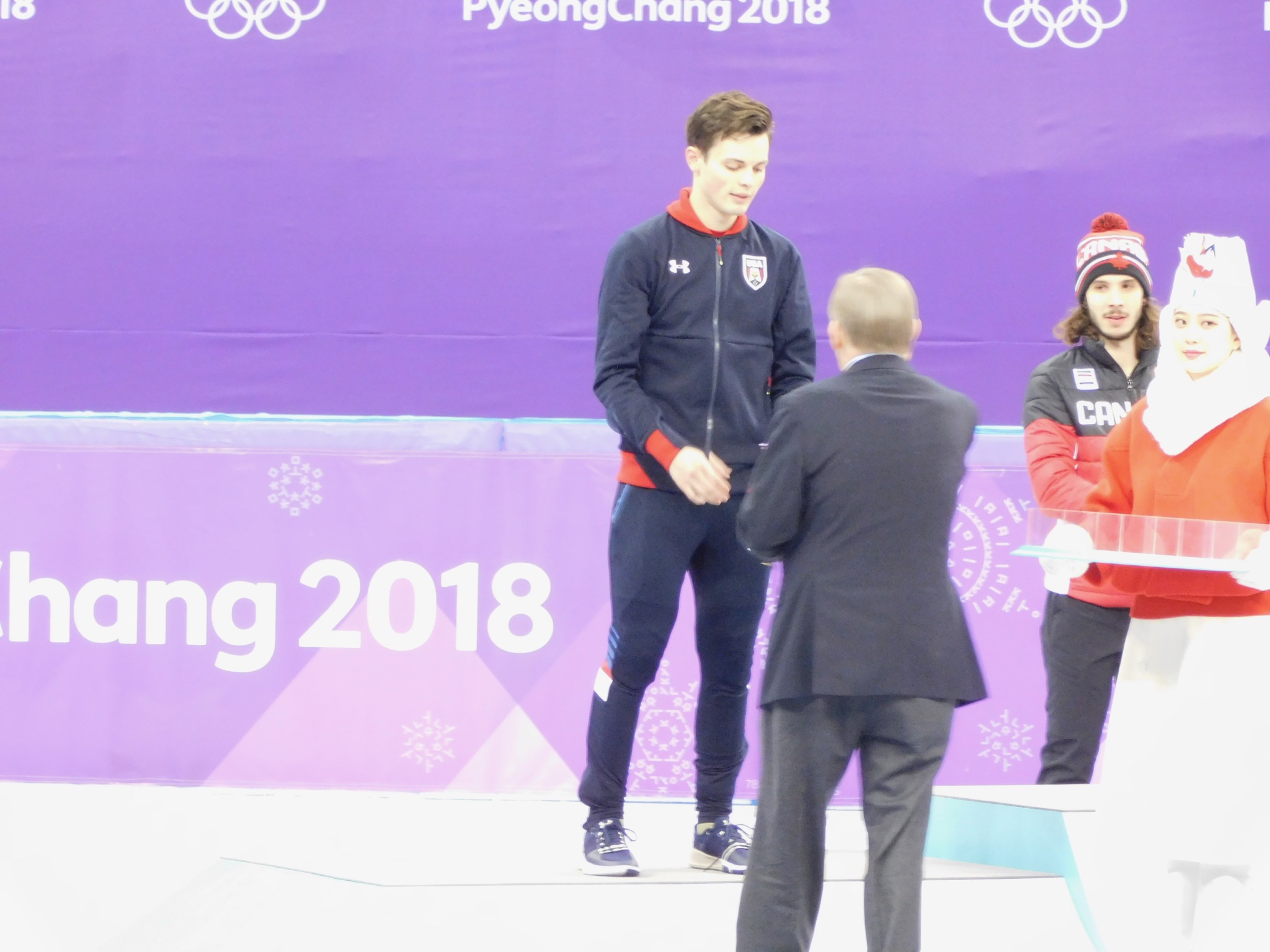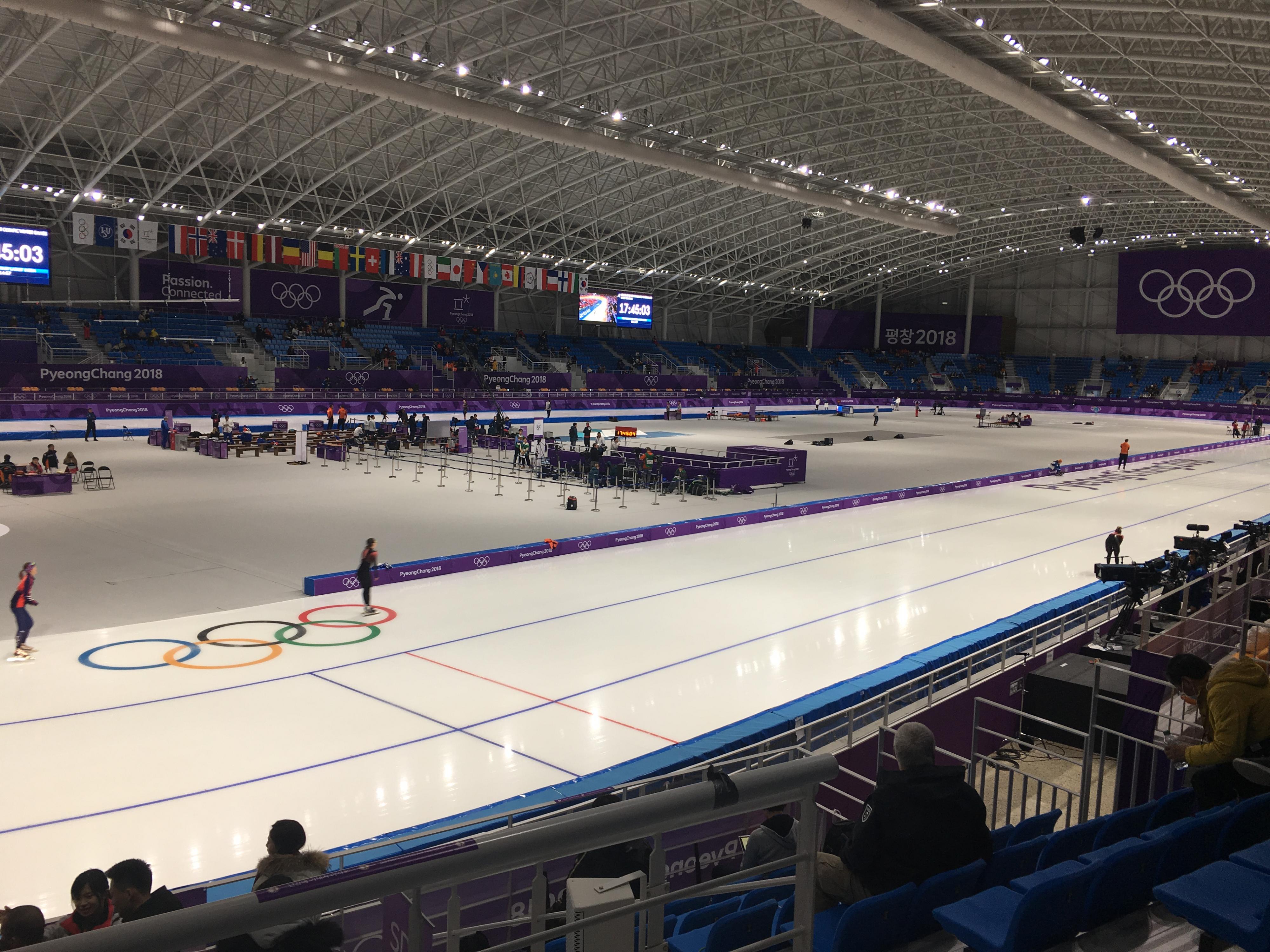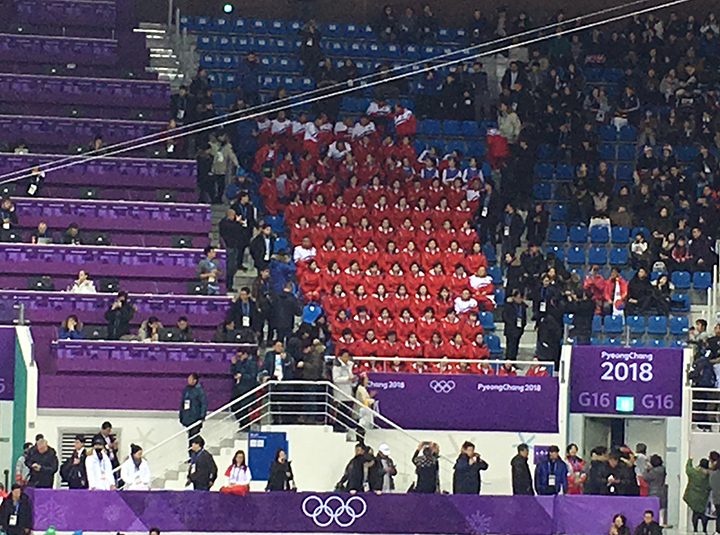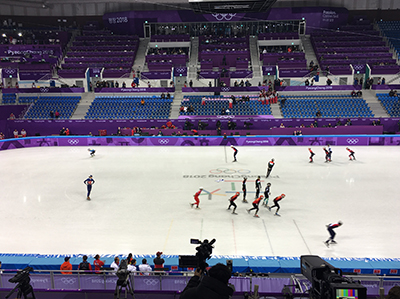
Nick Galli's blog: A mental performance coach's perspective of the Olympics
Nick Galli at the Gangneung (South Korea) Oval.
Nick Galli will share his perspective as a mental performance coach working with U.S. speed skaters during the Olympics in Pyeonchang, South Korea. Many of his athletes trained at the Utah Olympic Oval in Kearns, Utah. Galli is an assistant professor in the Department of Health, Kinesiology, and Recreation, teaching undergraduate and graduate courses. He holds a PhD in the psychosocial aspects of sport from the University of Utah. As a mental training coach, he has worked with individual athletes, coaches, and teams across a spectrum of sports and ages. Since 2016, Galli has been a coach for U.S. Speed Skating.
ASK THE MENTAL TRAINING COACH
QUESTION: "I’ve seen several negative and derogatory stories in the news about the gray patches on the speedskating uniforms. Are the athletes feeling any extra anxiety over the 'uniqueness' of their uniforms that may be hindering their performance?"
ANSWER: "The patches are required by NBC to cover up sponsor logos. No anxiety about whatsoever from the skaters."
Clarification: "It’s come to my attention that I misunderstood the question about the patches. What’s funny is that we’re all so used to the gray patches we don’t even notice them. The ski suits are designed to be as fast and aerodynamic as possible. That patch reduces friction. Not sure why it’s a different color, but the skaters don’t seem bothered at all by it."
QUESTION: “I know Nick works with the speed skaters, not figure skaters. Nevertheless, I'd like to know what he thinks happened to Nathan Chen last night during his disastrous Olympic debut, and what his mental coach might be recommending for his second performance."
ANSWER: "Since I don’t know Nathan and have never worked with him, I can’t really speculate on what happened. If he were one of my athletes, I would recommend that he take a moment to objectively assess what went wrong (and even what went right) with his first performance. Once he’s filtered all useful information from the performance, I would help him to “throw it away” and re-focus on his keys for the next one. There would likely also be some discussion of performing with a clean slate rather than trying to make up for the first one. Even at the Olympics, failure is a learning opportunity."
Got a question for Nick? Send us an email at bill.keshlear@health.utah.edu, and we'll pass it along.
Team Updates
SATURDAY, FEB. 24
(Photos: Nick Galli)
Closing ceremonies was tonight, and it was a spectacular show. In one sense the month has flown by, and in another it seems like we’ve been here forever.
Although the teams didn’t quite perform as well as expected, the consensus is that it was much a much better showing than 2014 in Sochi. The women’s team pursuit medal was definitely the highlight, as it was great to see two of our long time long track stars earn their first Olympic medals.
For me, this trip was quite a learning experience. The old Wide World of Sports line was “The thrill of victory and the agony of defeat.” I lived that line every day with the athletes and coaches at the village. I had the opportunity to reinforce key mental training principles with some of the athletes, as well as consult with coaches and staff on optimal communication strategies.
I also learned that staff members at the Olympics have to pitch in with tasks that don’t necessarily fit their job description (e.g., washing dishes, cleaning up athlete rooms for checkout). Now we go back to Utah, and although things will likely slow down, I also anticipate meeting with some skaters who are wrestling with the transition from being an Olympian to living a “normal” life.
For those retiring, leaving skating will be a huge life change and they will need support for sure. For the rest, the next quad and road to Beijing 2022 begins now!
WEDNESDAY, FEB. 21
From left, Heather Bergsma, High Point, N.C., Brittany Bowe, Ocala, Fla., Mia Manganello, Crestview, Fla., and Carlijn Schoutens, Heemstede, Netherlands, take a celebration lap at the Gangneung Oval. The trio of Bergsma, Bowe and Manganello beat Canada by 0.45 seconds. (Photo: US Speedskating)
The U.S. women’s Team Pursuit has made history by earning the first medal for the U.S. women long-track team since the 2002 Salt Lake Olympics, the first-ever medal for U.S. women in this event and the first U.S. medal in speedskating since 2010.
Such an exhilarating feeling! As a staff we are beyond proud of those four ladies, and happy to have been even a small part of their success. Still a few events left and a chance for more medals, so hopefully this creates some positive momentum for the team.
The best part about this medal for me was that I had the chance to be part of the strategy planning meetings leading up to the race. These ladies had a plan, believed in it, and executed it almost perfectly. It took a gutsy effort at the line to secure the win over Canada, but no way were they going to let this medal slip by.
U.S. Team Pursuit, bottom, edges out Canada to win a bronze medal. (Screen grab: NBC Olympics)
More from Team USA / US Speedskating
TUESDAY, FEB. 20
A glimpse of the Olympic Village dining hall. Athletes from all over the world get to know each other. (Photo: Nick Galli)
MONDAY, FEB. 19
As we move into the final week of competition, athletes are beginning to finish up. Some feel good about how they did, and others do not. As the mental performance coach, I also work with skaters postcompetition as they process their results. It can become easy to get caught up in the media’s definition of success (medals or bust), and forget about how cool it is to be one of the five or 10 best in the world at what you do. It’s my job to remind them of that fact.
SUNDAY, FEB. 18
Erin Jackson, the first African American woman qualify for the U.S. long Track Speedskating team, at the line before the 500 meter race. (Photo: Nick Galli)
SATURDAY, FEB. 17
John-Henry Krueger receives a silver medal. (Photo: Nick Galli)
Tonight, U.S. Speedskating earned its first medal of the Games when John-Henry Krueger took home a silver in the 1000 meter short track. There’s nothing quite like winning a medal to boost spirits, and the team is fired up to add to our medal count over the last week of the Games.
TUESDAY, FEB. 13
Women warming up for 1000 meters on long track. (Photo: Nick Galli)
We're four days in to the Games with mixed results. No medals yet, but a couple of skaters have come oh so close to making the podium. The media are beginning to become a factor now, making comparisons to the 2014 Games when U.S. Speedskating earned only one medal across short and long track.
Fortunately, our staff and skaters are mentally tough enough to block that stuff out. Our job as staff is to make sure that our attitudes stay consistent and optimistic. We need to model what we want to see from the athletes. There is an "all hands on deck" mentality among the staff that is fun to see. For example, yesterday when our dietitian was unavailable to prepare breakfast, myself and the strength and conditioning coach filled in making eggs and pancakes for the team.
MONDAY, FEB. 12
Brittany Bowe in a training session. Brittany took fifth in the 1500 and will also race in the 1000, 500, and Team Pursuit. (Photo: Nick Galli)
SUNDAY, FEB. 11
North Korean cheerleaders at the short track arena. (Photo: Nick Galli)
Short track racers warm up. (Photo: Nick Galli)
The first couple days haven’t gone as well as we hoped, but we’re excited for the next week, where we have several medal contenders competing. Lately I have been interacting a lot with the coaches about specific skaters. These conversations focus on making sure that the skaters go into their races with 100 percent trust in their preparation and plan.
SATURDAY, FEB. 10
Race day is finally here. We have four short trackers and one long tracker racing tonight. I think the coaches are more nervous than the athletes. After all, they have zero control once that gun goes off. So I’m here to support them as much as the athletes.
FRIDAY, FEB. 9
Watching opening ceremonies at the USOC building across from Olympic Village. Only a few staff members of U.S. Speedskating had an opportunity to march alongside the other athletes. (Photo: Nick Galli)
Today is opening ceremonies and speedskating (both long and short track) begins tomorrow. The intensity has definitely ratcheted up, and the skaters are ready to race! My role right now is to be “on-call” whenever and wherever I’m needed. Emotions are amplified right now and one of my jobs is to help the athletes process these emotions and go to the line trusting that they are ready to skate their best.
THURSDAY, FEB. 8
Some of our long track team during a training session at the Gangneung Oval. (Photo: Nick Galli)
Early this year I was fortunate enough to be invited as part of the U.S. Speedskating staff for the 2018 Winter Olympic Games in PyeongChang South Korea. My role here is similar to the one that I have in Utah, but at a more intense level.
I work with both the long and short track teams, and attend as many practice sessions with each team as I can. I act mainly as an observer, paying close attention to athlete-to-athlete and athlete-to-coach interactions, and athlete verbal and non-verbal behavior. If I notice that an athlete is having a particularly tough session, I may have a brief chat with them during a rest period, but otherwise I just try and remain visible and available to the athletes.
At this point they all know what I do and how to get in touch with me if needed. The coaches will also refer specific athletes to me if they feel it necessary. Several of our athletes are competing in their second, third, or even fourth Olympic Games, and already know what they need to do to perform their best. For these skaters, I try to stay out of the way, but be available on demand to offer support in any way that I can. This might include fetching a water or shuttling food to them when they don't want to walk to the dining hall.
At the Olympics, I am still the mental training guy, but I am also a staff member whose job it is to pitch in and do whatever I can to help the athletes so that their only concern is skating. For younger skaters who are competing in the Games for the first time, I try to be a little more proactive and hands-on. Individual sessions can happen in the dining hall, on the bus to or from the venue, or really anywhere and at any time that is quiet and convenient.
The rapport and relationships that I have built over the last 18 months are critical here in Korea, as athletes are unlikely to talk to a staff member that they don't know well for the first time at the Olympics.
THURSDAY, FEB. 8
I thought it would be a good idea to set the stage a bit and write about my general role with the teams as well as my role here at the Games.
I was hired by U.S. Speed Skating in 2016 to provide mental training/preparation services to the athletes, as well as consult with staff on creating the optimal psychosocial climate for athlete confidence and motivation.
An example of work I might do with individual athletes includes relaxation training, visualization/imagery, tips for focusing on the right thing at the right time in competition and training, and self-talk strategies to enhance emotional management, focus, and confidence.
I also spend a fair amount of time just listening to the athletes and offering my perspective as someone who understands elite sport, but is an outsider in their world.
The bulk of my work is actually with coaches and other support staff. With the coaches, I offer suggestions on how they might simultaneously train the mind and body during workouts, as well as how to best communicate with individual athletes.
Since the athletes are incredibly busy, the goal at the team level is for them to be training the mind as they train the body. For example, with one team we introduced the idea of doing an "emotional check-in" between sets during a difficult workout. We made this simple by having them think of their emotions like a stoplight (green = feeling good and ready to go, yellow = beginning to lose it and need to take action to regain control, red = totally lost it and need to take a timeout). The skaters brought journals with them to practice and simply noted the color of their stoplight at various points in practice, as well as what caused it, and how they were handling it. This is useful information to tap when the pressure gets turned up at major competitions such as the Olympic Games.
